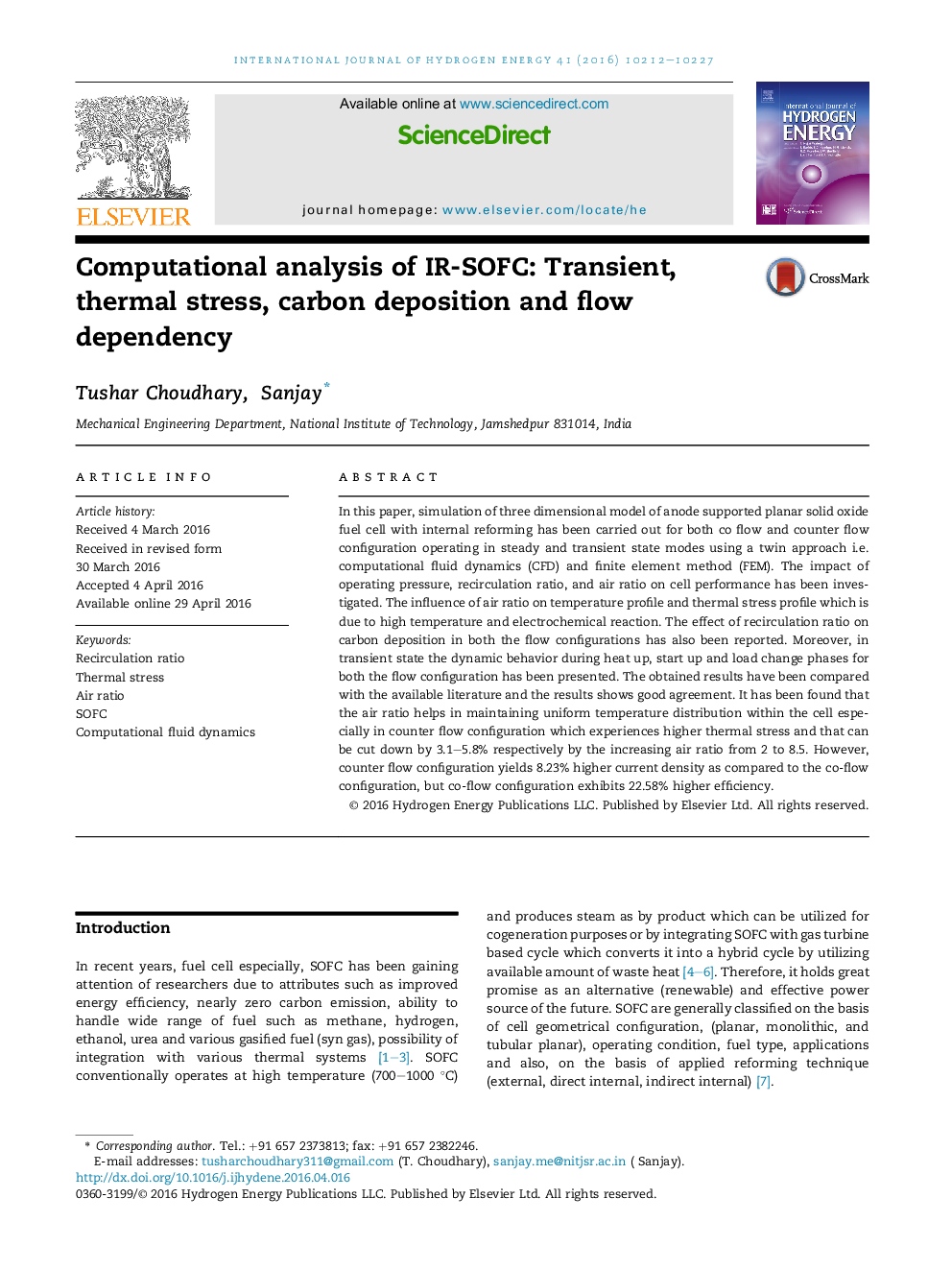| کد مقاله | کد نشریه | سال انتشار | مقاله انگلیسی | نسخه تمام متن |
|---|---|---|---|---|
| 1269753 | 1497401 | 2016 | 16 صفحه PDF | دانلود رایگان |

• Recirculation ratio adversely affects cell performance with higher carbon deposition.
• Effect of air ratio on temperature distribution has been examined.
• Increasing air ratio tends do decrease thermal stress.
• Effect of flow dependency on transient thermal performance has been reported.
In this paper, simulation of three dimensional model of anode supported planar solid oxide fuel cell with internal reforming has been carried out for both co flow and counter flow configuration operating in steady and transient state modes using a twin approach i.e. computational fluid dynamics (CFD) and finite element method (FEM). The impact of operating pressure, recirculation ratio, and air ratio on cell performance has been investigated. The influence of air ratio on temperature profile and thermal stress profile which is due to high temperature and electrochemical reaction. The effect of recirculation ratio on carbon deposition in both the flow configurations has also been reported. Moreover, in transient state the dynamic behavior during heat up, start up and load change phases for both the flow configuration has been presented. The obtained results have been compared with the available literature and the results shows good agreement. It has been found that the air ratio helps in maintaining uniform temperature distribution within the cell especially in counter flow configuration which experiences higher thermal stress and that can be cut down by 3.1–5.8% respectively by the increasing air ratio from 2 to 8.5. However, counter flow configuration yields 8.23% higher current density as compared to the co-flow configuration, but co-flow configuration exhibits 22.58% higher efficiency.
Journal: International Journal of Hydrogen Energy - Volume 41, Issue 24, 29 June 2016, Pages 10212–10227